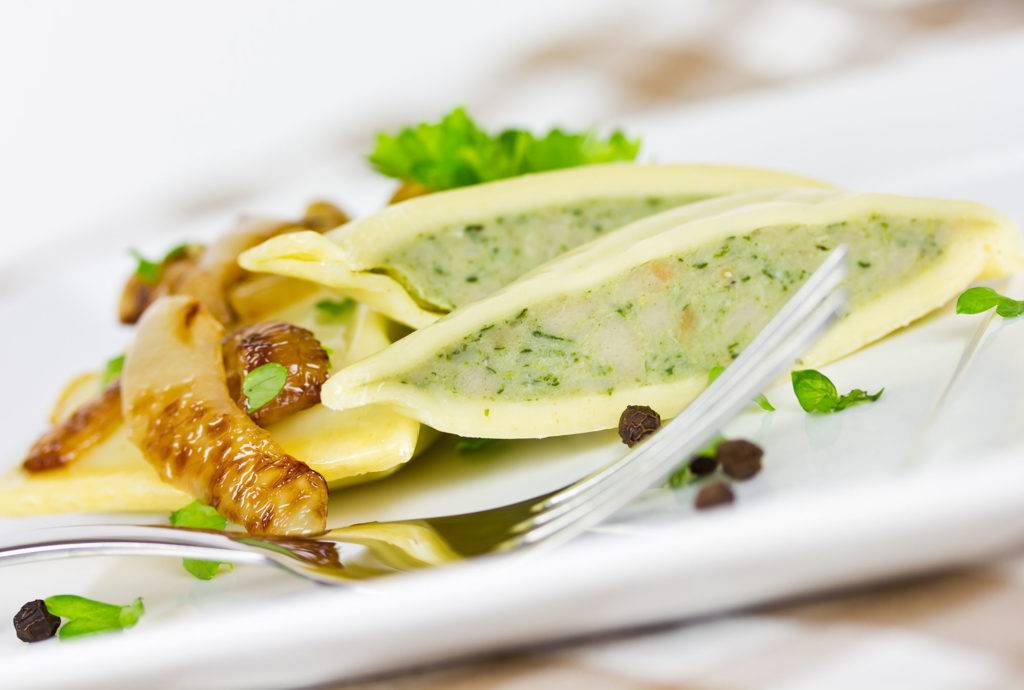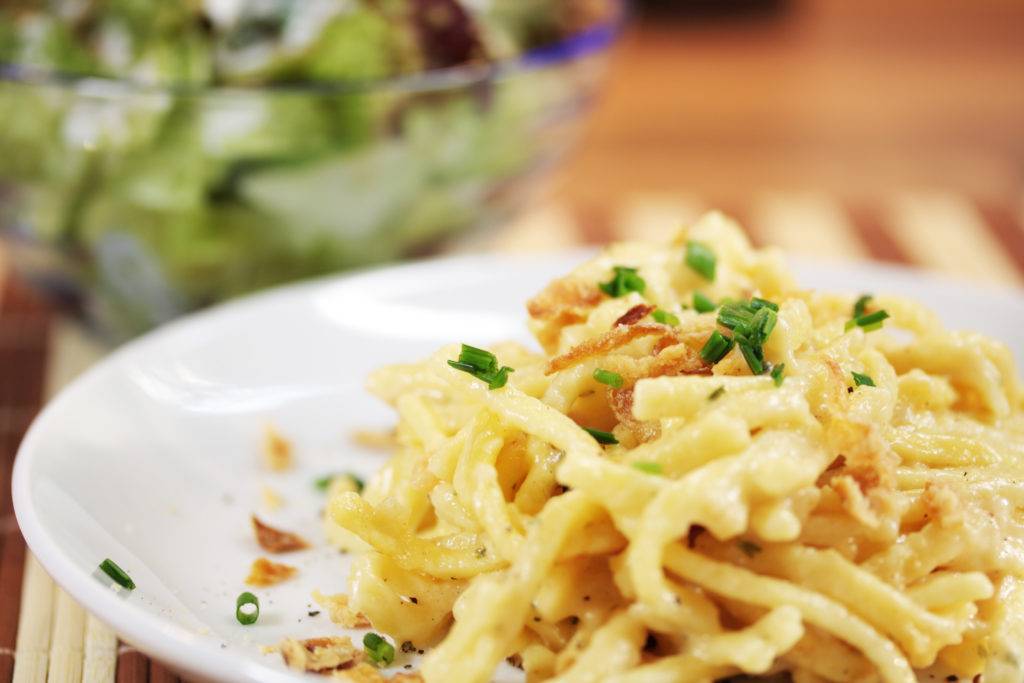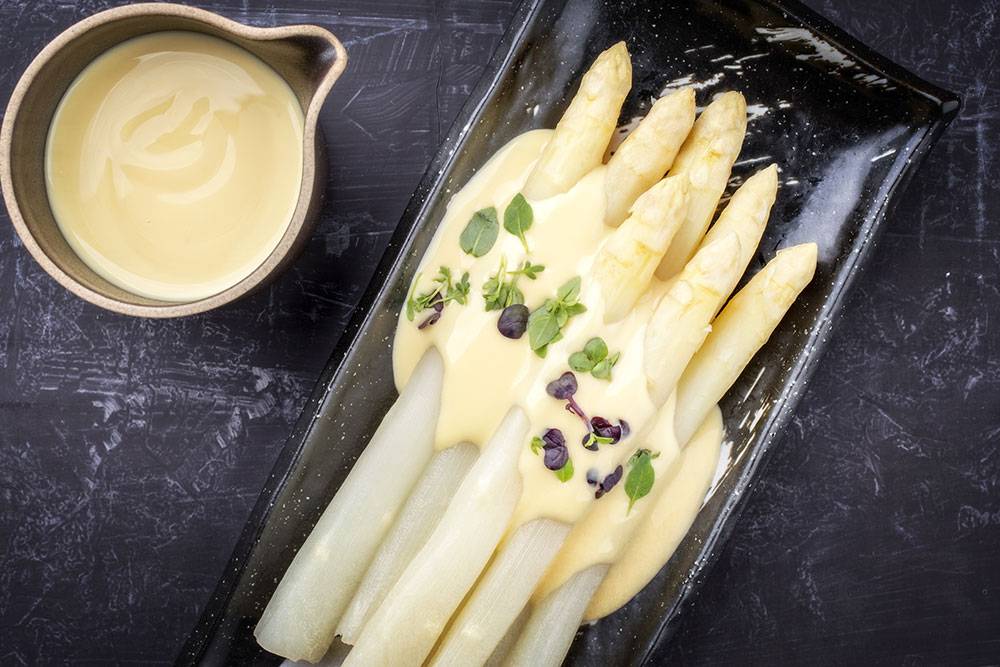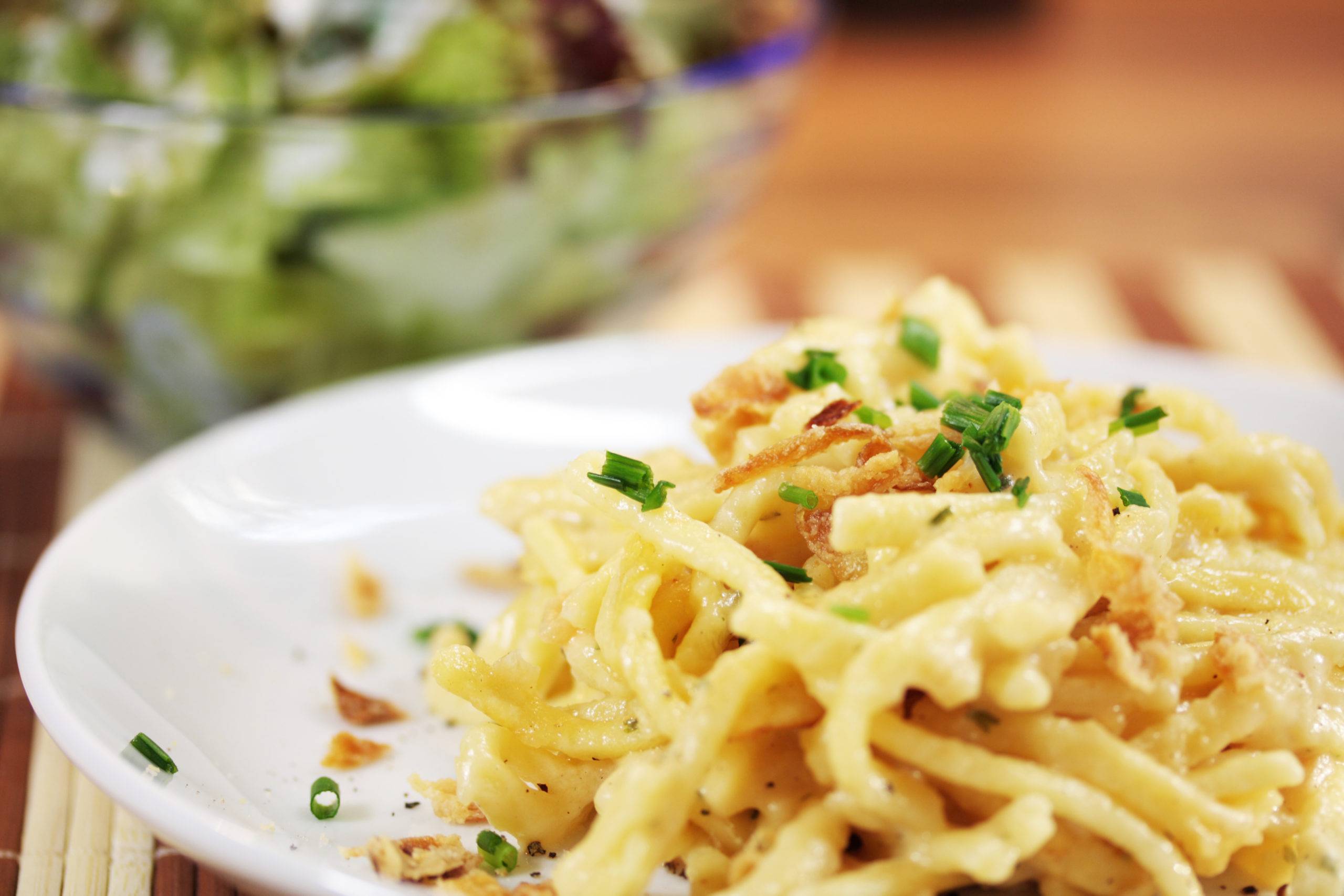Can you find vegetarian food in Germany?
A country famed for its love of sausages, Germany doesn’t exactly scream ‘vegetarian friendly’. In fact, the country produces more than 1500 kinds of sausage, and the average person in Germany will consume up to 61 kg of meat a year.
On a recent trip to Bavaria, my boyfriend voiced some serious concerns that, with a vegetarian diet, I’d be able to find anything to eat (spoiler alert, I did).
The truth is that German cuisine hold lots of options for us non-meat-eating folk, as long as you know what you are looking for. Here is the ultimate guide to vegetarian food in Germany.
Table of Contents
Traditional German Dishes
Even some of the more classic German food staples are actually meat free (or at least have a vegetarian version). Some of these traditional dishes are regional and you won’t find them everywhere, but it’s good to keep these dishes in mind on your next visit to Germany.
Maultaschen
Typically found in the Swabish region, Maultaschen are a kind of filled pasta (a bit like ravioli but on steroids).
While Maultaschen are traditionally stuffed with minced meats, these days you’ll find plenty of vegetarian options floating about in restaurants and supermarket shelves in the South, usually with some variation of spinach and mushroom inside.
Helpfully, they are often directly labelled as ‘vegetarisch‘ on restaurant menus, but if you aren’t sure just ask.
These delicious pasta pillows are so significant to the region that measures have been made to protect the dish, meaning that genuine Maultaschen can only be made in Swabia. Kind of like the champagne of the pasta world.
If Maultaschen are calling your name from a menu, just be sure to double check how it’s served. They’ll sometimes come swimming in a bowl of broth, which chances are won’t be of the vegetarian variety.

Spätzle
Another South West speciality, Spätzle are tiny egg noodles (or dumplings, depending on who you ask) made from a simple recipe of flour, eggs, salt and water. The Swabians have been making Spätzle for centuries, with some evidence to suggest they may have even been around in medieval times. So revered are they, in fact, that Swabian Spätzle are also protected throughout Europe as a regional speciality.
Though Spätzle are often served as an accompaniment to sausages and stews, they also make a delicious meal. Look out for Käsespätzle (cheese spätzle) on the menu.
Here, the noodles are simply assembled with lashings of grated cheese and topped with crispy fried onions (kind of like the German form of macaroni cheese). It certainly won’t do wonders for your waistline, but as far as German comfort food goes, this is up there with the best.

Knödel
These hearty boiled dumplings can be found on menus all over Germany, often served as a side dish but also a main course in their own right.
For veggies, one of the best options is a stuffed dumpling (I’ve found spinach to be a popular option), Kartoffelknödel (potato dumplings) or a Semmelknödel (bread dumplings) served with a rich mushroom sauce.
Be warned, however. There are many varieties of Knödel, and not all of them are vegetarian-friendly. Stay away from Leberknödel (made with beef liver) and Speckknödel (a bread dumpling dotted with bacon).
In fact, you should always be on the lookout for the German word ‘speck‘. Over here, bacon has a way of appearing in a disproportionate number of meals.

White Asparagus with Hollandaise Sauce
Every year between around April to June, Germans go absolutely nuts for white asparagus. There are even Asparagus Queens crowned every year, the season culminating in a grand asparagus festival. During this time, you’ll see spargel popping up on every menu, usually smothered with hollandaise sauce.
I won’t lie, I don’t quite get the adoration for this rather woody tasting vegetable, much preferring the green variety myself. But given the country’s affinity with asparagus, it would be a shame to go home without giving it a try.
If you do find it on a restaurant menu, make sure it’s not also served with speck to avoid little bits of bacon hiding in your sauce.

Kartoffelpuffer
Crispy, carby and downright delicious, these fried potato pancakes are among my favourite vegetarian dishes. They are actually served both savoury and sweet, and are a common street found and staple of Christmas markets.
Kartoffelpuffer are made by simply frying a mixture of finely grated potato, onion, flour and egg. Sort of like a thin hashbrow.
The savoury version is usually found heaped with sour cream or Crème fraîche and garnished with a sprinkling of chive. Again, in some regions bacon is added on top (shock horror). So as usual, just double check if you’re not sure.
What To Watch Out For: Not So Vegetarian Food In Germany
One thing I have found in Germany is that sometimes there can be meat in a dish that isn’t mentioned on the menu. When dining out, make sure to double check the contents of these pesky little dishes.
Bratkartoffeln
Pan-fried potatoes seem an innocent enough side dish, served alongside a huge number of main courses in northern Germany. However, what the menu may neglect to mention is that these potatoes are often fried in pork fat, and are also usually mixed in with fried bacon lardons.
When I first moved up to the coast I made the grave mistake of ordering these, spending the entirety of my meal picking through the pile of potatoes to avoid the bacon bits.
Kartoffelsalat
The potato salads in Germany are quite different from those served in the united states. Traditional recipes do not require any mayonnaise, and instead the dressing is made with a base of broth. More often than not, this will be beef, so be sure to ask the restaurant staff before you place your order.
Vegetarian Alternatives
As with most countries, meat replacement options will be much easier to come by in bigger cities like Munich or Berlin (which, as it happens, was recently crowned the vegan capital of the world). If you’re planning a stay in one of Germany’s more metropolitan areas, here are a couple of veggie versions of German dishes that you might like to try.
Currywurst
As delicious as it is popular, currywurst is a German fast food staple, consisting of a fried sausage cut into bite sized chunks and smothered with ketchup and a generous sprinkling of curry powder.
Doner Kebab
It may not be the first dish that springs to mind when you think of Germany, but some believe that Berlin was in fact the birthplace of this late-night dish, invented by a Turkish guest worker back in 1972. Whatever its origins, doner kebabs are huge over here, and luckily there are plenty of places where even us veggies get to join in the indulgence.
Be wary of ‘vegetarian kebabs’ on menus in smaller towns. This is often just a pita bread filled with salad, which is not only incredibly boring but usually hideously overpriced.
Vegetarian Food In Germany: At The Supermarket
Update September 2021: I’m delighted to tell you that you shouldn’t have any problem finding lots of vegetarian and vegan food options in the supermarkets.
I live in a town of only 5,000 people, and every local store has a vegetarian section. Nevertheless, you can read a general overview of some brands to look for below.
Admittedly, finding a meat substitute on a menu in a small town will be pretty much impossible, but I’ve been really pleasantly surprised at the selection on offer in the supermarkets. As it turns out, Germany is one of the top producers of vegan products in the world.
Rewe and Edeka in particular stock a lot of vegetarian brands. Budget grocery stores Penny and Lidl even boast their own ranges of meat substitutes.
Here are some of the most common vegetarian brands to look out for:
Rügenwalder Mühle
While the company itself produces meat products, Rügenwalder Mühle have a great range of meat substitutes, from chicken slices and salami to schnitzel and nuggets. With its recognisable green packaging, it’s probably the most commonly found ready made vegetarian food in Germany.
I’ve only tried a small selection, but everything I’ve sampled has been delicious (with the vegetarian lunch meats tasting almost creepily like the real thing). Take a look at their full range here.
Naturgut
As mentioned up above, this is Penny’s own vegetarian products, with sauces and spreads among their veggie burgers, tofu and even bolognese. Coming in at a pretty low price point, the quality of Naturgut products is up there with the best. Plus, for those on a vegan diet, they even have a selection of dairy free chocolate.
Veganz
Possibly the most creative brand for vegetarian food in Germany, Berlin-based Veganz has a wide range of vegan products from full-on meals like frozen pizzas to snacks and ingredients (like a rather curious looking vegan salmon).
Not only that, but it’s actually an entire vegan supermarket, though unfortunately if you’re visiting anywhere but the German capital then I’m afraid you’re out of luck. Veganz do sell wholesale to a range of other supermarkets though, so if you’re in a more built up town or city you will probably be able to find it.
Next Level Meat
Lidl’s own veggie meat range is great for convenience and fast-food type products, with ‘Next Level Nuggets’ and some delicious burger patties. If, like me, you also cook for meat eaters, their mince substitute is always a welcome addition in homemade bolognese and chilli.
Conclusion
Being vegetarian in Germany is far easier than you might think. While you will definitely have more vegetarian and vegan options in major towns and cities, even more rural parts of the country are catching on to the world’s waning interest in meat.
I’m yet to go to a restaurant where there isn’t a single thing I can eat. However, even if you are forced to dine at home, supermarkets hold plenty of options for delicious vegetarian meals. Good luck!



